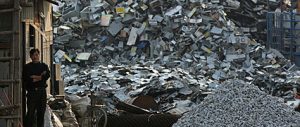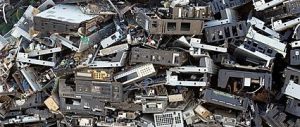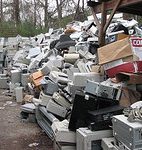A tale is sometimes told of clean computing and the power of information technology to save the world through the effective management of resources, the accurate modelling of climate change and the deployment of a global sensor network of enormous power. I know, because I’ve written it myself.
Such tales envisage massive server farms packed with disks, memory and processors, located in remote areas, powered by clean renewable electricity and providing cloud-based computing wherever it is needed to iPad-wielding masses.
They rarely mention the mines that despoil the landscape in order to gain access to the rare minerals needed to make chips and batteries, the polluted water supplies around refineries and fabrication plants, or the rest of the environmental degradation that is the result of manufacturing the components of the digital age.
Yet around the world we see the damage that has been done as we rush to build the latest, fastest devices without considering the larger cost, and governments continue to encourage firms to see environmental impact as an externality – a cost that does not need to be factored into cash-flows, quarterly-earnings reports and business plans.
The efforts of campaigners like Ma Jun and the Institute of Public and Environmental Affairs (see “China’s heavy-metal challenge” ) should give us all hope that things can be changed. Watching Chinese NGOs engage with major electronics brands to ensure that standards are adhered to – forcing them to listen to the voices of those living in the regions directly affected by toxic spills, poor environmental controls and other bad practice – should be an inspiration to those of us who benefit from the technologies but have not, so far, had to bear the environmental price.
Earlier campaigns about workers’ rights or the exploitation of children took years to achieve traction, partly because of resistance on the part of the major brands involved to disclose details of their operation but also because of the effort taken to persuade consumers to care about who made the products they bought so eagerly.
But IPE and the other organisations in China have one advantage over the earlier campaigns, and that is the nature of the businesses they are targeting. It’s reasonable to assume that anyone buying an Apple, HP or Sony product is online, while not everyone who buys a Gap t-shirt or wears Nike sneakers is going to be connected.
The IT pollution campaign is struggling against many obstacles, not least the high levels of secrecy which most computing brands insist on from their suppliers. This, coupled with what seems a deliberate unwillingness to keep track of the second-tier suppliers that make components for them, makes good information about who is providing what very difficult to come by.
But once the information is out there – and I don’t want to downplay the effort that will be needed to get that information – then it will spread quickly around the world using the very networks and devices that have been built at such cost to the environment and to the lives of those living in Fujian province or elsewhere in China and other manufacturing countries. We need to make sure that the connected world does its part in ensuring that this happens and that the pressure is maintained.
Bill Thompson is an English journalist, commentator and technology critic. His weekly column appears in the technology section of the BBC News website, and he contributes to other publications both on and off-line, including The Guardian, The Register and the New Statesman.
Homepage image by Dirk Gently


